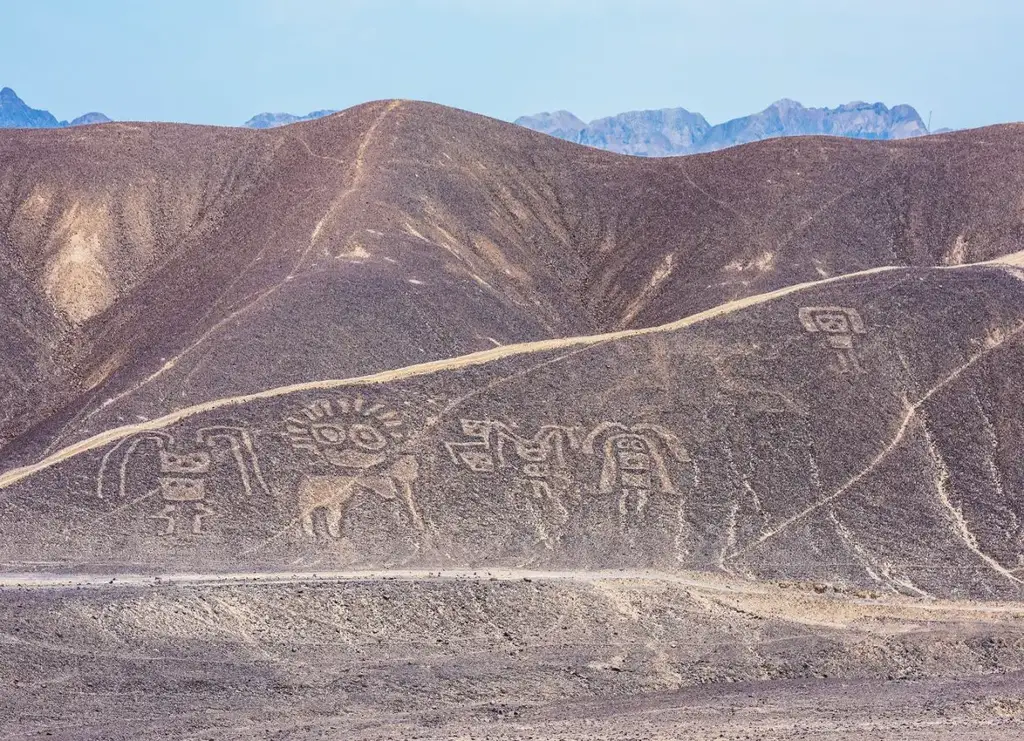The valleys of Palpa and Nasca share a combined cultural history, with the Palpa area of the Nasca basin containing geoglyphs and linear features that are comparable in quality and complexity to the concentration of lines and geoglyphs on the Nasca desert plains (pampas).
To differentiate the two, the “Nasca geoglyphs” is used to denote all pre-Hispanic ground carvings in the Nasca drainage, whilst the “Palpa geoglyphs” refers to the subset of geoglyphs located in the area around the present-day town of Palpa.
It is speculated that the Palpa geoglyphs derive from the period of the Paracas culture (800 BC – 100 BC), the precursor to the evolution of the Nasca culture (100 BC – AD 800), that are both distinguished by their unique associated ceramics and textiles.

Whilst many of the Nasca geoglyphs embody living things, such as stylised hummingbirds, spiders, monkeys, fish, sharks, orcas, lizards, and plants etched into the flat desert floor, the Palpa Geoglyphs are more mysterious, depicting motifs, style, and topographic settings that resemble contemporary Paracas petroglyphs, or obscure human-like figures or warriors.
The early figures were made by removing dark stones from lighter sediments. But unlike later geoglyphs, the removed stones were not only used for marking the outline of the geoglyph, but were also piled up to form the mouth, eyes, or other anatomical features.
The Palpa geoglyphs were mainly position on sloped terrain near the Rio Grande basin or the Palpa alluvial plain, which allowed the geoglyphs to be seen from a distance. Hardly a trace of use has been associated, making it difficult to theorise their purpose or function in Paracas culture, in marked contrast to later geometric geoglyphs of the Nasca culture.
Header Image Credit : Javarman – Shutterstock







